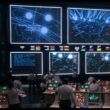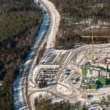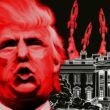Don’t erase the terms of the CSA
By Christopher A. Ford, December 10, 2012
Daniel Joyner seems to be having as much trouble reading my earlier essays in this Roundtable as he does Iran’s Comprehensive Safeguards Agreement (CSA). He somehow understands my interpretation of the agreement to mean that the IAEA has “unlimited authority to ensure that safeguards are applied on all fissionable material anywhere within the territory of Iran, by any means the agency considers necessary, no matter how intrusive … .” This assertion about my views suggests he never actually read my last essay, however, for in it I made quite the contrary claim.
As I explained, the fact that a CSA fails to provide sufficiently intrusive tools with which the IAEA can carry out its responsibilities is precisely the problem that the Additional Protocol was designed to help solve. As written, Article 2 makes the agency responsible for verifying the correctness and completeness of declarations, but the agreement, itself, fails to provide the agency with adequate investigative authority to do this job. The Additional Protocol was written to remedy this.
This isn’t too complicated a point, and it’s a shame to repeat it: Far from providing “unlimited” authority to poke around in Iran, the CSA doesn’t provide nearly enough investigative authority relative to the verification responsibility with which it saddles the IAEA.
In truth, even though the protocol improves things immensely, it still provides too little investigative authority to permit reliable verification in a country such as Iran, which has a dismal compliance track record and has engaged in systematic denial and deception. Even if Iran were to comply with the protocol as the Security Council has required, therefore, this would only partly solve the problem; this is why the council has commanded Iran to cooperate beyond the scope of what is specified in the protocol.
If Joyner were really interested in protecting the sovereignty of states with CSAs, he should consider what might happen if Article 2 existed today in the absence of the investigative tools that the protocol seeks to provide. A generation ago, the IAEA was willing to assume it could do its job simply by inspecting declared facilities. Having learned from the nuclear work secretly conducted by Iraq, Libya, and Iran in the 1980s and 1990s, however, it now knows that, by using only traditional investigative tools, it cannot verify that safeguards apply to “all” relevant materials and activities.
The agency’s standard of proof for reporting to the Security Council is fairly low. Under Iran’s CSA, the agency may report Iran if it “finds that the Agency is not able to verify that there has been no diversion of nuclear material … to nuclear weapons or other nuclear explosive devices.” The IAEA doesn’t need to show that there has been a diversion, just that it’s insufficiently clear that there hasn’t.
Without the expanded tools of the protocol, therefore, the IAEA today might have to refer countries — more often than they deserve — to the Security Council, simply because the agency is unable to verify non-diversion. The Additional Protocol, therefore, protects countries that follow the rules, because it permits the agency to satisfy its responsibilities in more cases without having to involve the council.
The agency is charged with applying safeguards to all nuclear materials in Iran “in accordance with the terms” of its CSA, and it is precisely those terms that make clear that this responsibility extends to “all” materials. The agency asks that the terms of Iran’s agreement be honored, while Joyner asks that they be selectively erased.
Faced with those alternatives, I submit, lawyers must side with the IAEA.
Topics: Nuclear Energy, Nuclear Weapons
Share: [addthis tool="addthis_inline_share_toolbox"]














